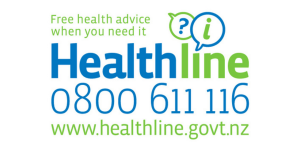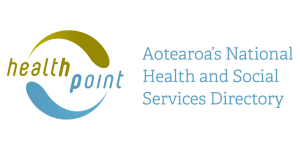Contraception
Overview of contraception methods | Rongoā ārai hapūtanga
Key points about contraception
- Contraception (rongoā ārai hapūtanga), or birth control, is a term for the various methods used to prevent pregnancy.
- There are a lot of different types of contraception that can be used to prevent pregnancy.
- Each type of contraception works differently, but generally they stop a sperm from meeting with an egg, which is how a pregnancy starts.
- Some contraception works better than others and each method has its pros and cons.
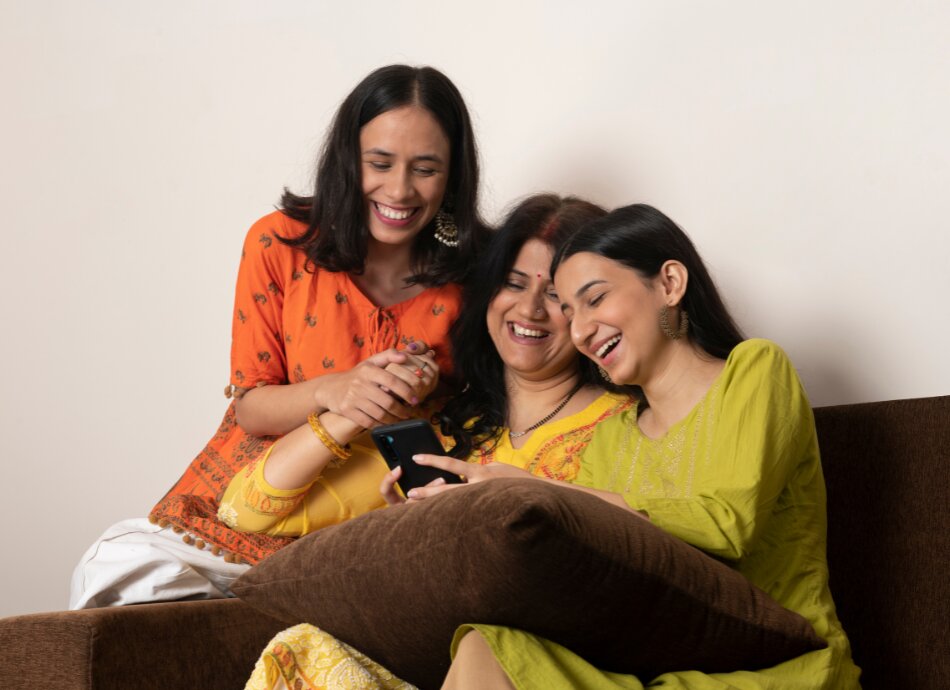
Contraception, or birth control, is a way to prevent pregnancy. Contraception stops a sperm from meeting with an egg, which is how a pregnancy starts. There are different types of contraception. No form of birth control is 100% effective. Each type of contraception works differently – some are more effective than others.
There are 2 main types of contraception – those that contain hormones and those that don’t contain hormones. Read more about the different types of contraception below.
The ideal contraception method for you depends on many factors including:
- how well they work
- convenience
- your health
- your fertility plan (whether or not you want a baby)
- side effects
- sexually-transmitted infection (STI) protection.
Some may be suitable for you and some may not. Each has their pros and cons. For more detailed information, see which contraception is best for me?
Video: Contraception – an introduction
There are a wide range of contraceptives you can choose from. This video provides an explanation of the common types so you can be more informed and choose the one that is right for you.
There are 2 main types of contraception – those that contain hormones and those that don’t contain hormones.
Here is a brief summary of each type of contraception and the chance of getting pregnant. For detailed information on each, click on the links below.
Contraception that contains hormones
- Progestogen-only pill (the mini-pill): You must remember to take a pill every day. The chance of getting pregnant is 8% in general, but less than 1% if it's used perfectly.
- Combined oral contraceptive pill (the pill): You must remember to take a pill every day. The chance of getting pregnant is 8% in general, but less than 1% if it's used perfectly.
- Depo Provera injection: The injection is given every 13 weeks (approximately every 3 months). The chance of getting pregnant is 1 to 3%.
- Implant (Jadelle): The implant lasts for up to 5 years. The chance of getting pregnant is 1% or less.
- Intra-uterine devices (IUD) that contain progestogen, such as Mirena® or Jaydess®. Mirena® is effective for 5 years, while Jaydess® is effective for 3 years. The chance of getting pregnan is 1% or less.
Contraception that doesn't contain hormones
- Condoms: You must remember to have them with you and use them every time you have sex. The chance of getting pregnant is 2 to 21% depending on correct use.
- Fertility awareness: Fertility awareness means working out ‘safer’ times to have sex. You need detailed advice on this method as it takes commitment and great care. The chance of getting pregnant is 2 to 24%.
- Tubal ligation: This is an operation where clips are put on your fallopian tubes (or they're removed altogether) to stop the egg getting to your womb. The chance of getting pregnant is less than 1%. It should only be considered when you're sure that you don't want to have a child in the future.
- Vasectomy: This is a small surgical procedure done in men to block the tubes that carry sperm. The chance of getting pregnant afterwards is less than 1%. It should only be considered when you're sure that you don't want to have a child in the future.
- Withdrawal method: The withdrawal method is sometimes called ‘coitus interruptus’. It means pulling the penis out of the vagina before ejaculation.
This is not a very reliable contraceptive method. The chance of getting pregnant is 25%.
Emergency contraception
Emergency contraception can stop you getting pregnant after unprotected sex (sex without contraception or when contraception might have failed). It's not intended for ongoing or regular use as a main form of birth control.
There are 2 types of emergency contraception – the emergency contraceptive pill and the copper IUD.
- The emergency contraceptive pill (also called the morning after pill) must be taken within 72 hours of unprotected sex. The chance of getting pregnant is 2% if you weigh less than 70kg.
- The copper IUD can be inserted up to 5 days after unprotected sex, or within 5 days of your earliest expected date of ovulation. It's recommended for women over 70kg. The chance of getting pregnant is less than 1%.
Read more about emergency contraception.
The ideal contraception method for you depends on factors such as:
- your health
- whether you take medicines that may interact with the method
- whether you smoke
- how reliable you need your contraception to be
- how often you have sex
- how many sexual partners you have
- your preference
- whether you want to have children in the future.
Talk to your healthcare provider about the best form of contraception for you. Your nurse or doctor will ask you few questions about your health and family history. They will also ask you some personal questions, such as your sexual relationship with your partner/s and to check that you're not being pressured into having sex when you don’t want to.
They will also talk about how to prevent sexually transmitted infections STIs, eg, using condoms, and will do screening for STIs if you're sexually active. All appointments are confidential and you are welcome to ask your nurse or doctor anything you would like to know.
Read more about how to choose the right contraception.
In Aotearoa New Zealand, anyone of any age can get contraception. Here are some suggestions for where you can get contraception.
- See your healthcare provider.
- Talk to your school nurse.
- Visit a Sexual Wellbeing Aotearoa clinic(external link) in your area. Note: If you're under 22 years of age and are a New Zealand resident, your clinic visit for contraception is free. Find out about fees and charges(external link) for Sexual Wellbeing Aotearoa clinics in Aotearoa New Zealand.
- Some pharmacies, with trained pharmacists, can provide oral contraception without a prescription for people who meet the eligibility criteria.
- Community-based services including sexual health clinics, community clinics, Iwi Hauora and Pacific providers, and health promotion providers.

Image credit: Healthify He Puna Waiora
Sexual Wellbeing Aotearoa(external link) provides useful information and resources about contraception on their website. They also have clinics you can visit to talk to someone so you can make informed choices about your sexual and reproductive health. Visit their website or make an appointment by filling out the appointment form(external link).
The following links provide further information about contraception. Be aware that websites from other countries may have information that differs from New Zealand recommendations.
Choosing your contraception(external link) Sexual Wellbeing Aotearoa, NZ
Protected&Proud(external link) a contraception platform that supplies unbiased, accessible and understandable information that increases awareness of the most effective contraception choices in Aotearoa
What is contraception?(external link) Sexual Wellbeing Aotearoa, NZ
Your contraception guide(external link) NHS, UK
Contraception methods(external link) Patient Info, UK
Apps
Brochures
Note: In New Zealand, visit your family doctor or Sexual Wellbeing Aotearoa. Cervical screening is done every 3 years unless you have had an abnormal result.
Choosing your contraception(external link) Sexual Wellbeing Aotearoa
A compact guide to sexual health(external link) HealthEd, NZ, 2010
The minipill or progestogen-only pill (POP)(external link) Family Planning NSW, Australia, 2018
Contraception – the vaginal ring (NuvaRing) Family Planning NSW, Australia, 2014 Arabic(external link), Mandarin(external link), Korean(external link), Farsi(external link), Thai(external link), Vietnamese(external link)
Contraception – the male condom Family Planning NSW, Australia, 2014 Arabic(external link), Mandarin(external link), Korean(external link), Farsi(external link), Thai(external link), Vietnamese(external link)
Contraception – the copper IUD(external link) Family Planning NSW, Australia, 2014 Arabic(external link), Mandarin(external link), Farsi(external link), Korean(external link), Thai(external link), Vietnamese(external link)
References
- NZ Aotearoa’s guidance on contraception(external link) Ministry of Health, NZ, 2020
- Contraception – which option for which patient?(external link) BPAC, NZ, 2019
- Contraception – general overview(external link) Patient Info, UK
Brochures
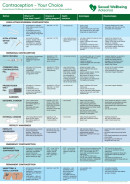
Sexual Wellbeing Aotearoa, NZ, 2024
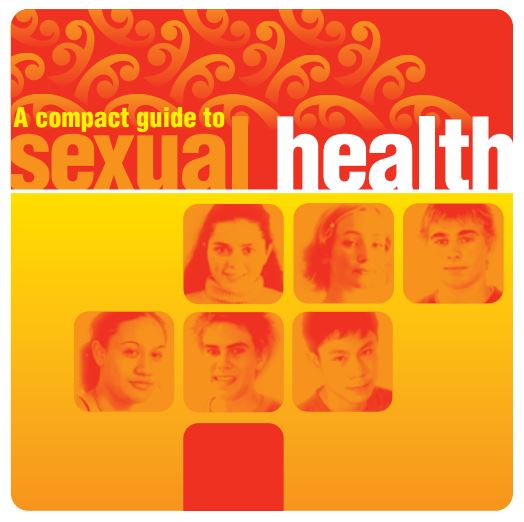
HealthEd, NZ, 2010
Credits: Healthify editorial team. Healthify is brought to you by Health Navigator Charitable Trust.
Reviewed by: Angela Lambie, Pharmacist, Auckland
Last reviewed:


